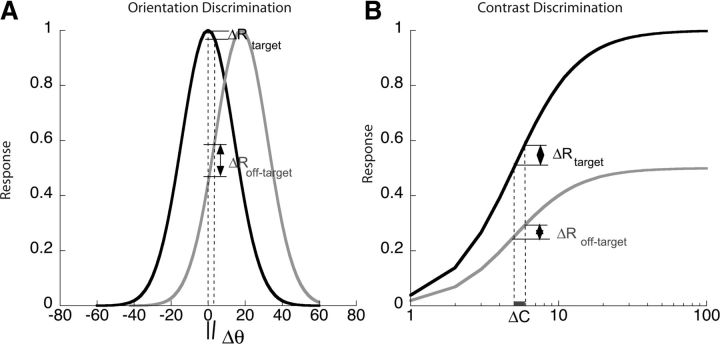Figure 1.
Hypothetical orientation and contrast response functions mediating fine discrimination. A, Orientation tuning curves with preferred orientations of 0 (vertical) and 20°, shown in black and gray, respectively. The differential response to a small orientation change around vertical is much greater in the population tuned 20° away than in the population tuned to vertical, making the tilted population much more sensitive for orientation discrimination. B, Contrast response functions for the same two populations. The contrast response function is monotonic with the largest response in the population that matches the vertical target orientation and a scaled-down response for other orientations. The differential response to a change in contrast of a vertical target appears to be greater in the population tuned to 0°, than in the population tuned to 20°. But as the higher response level is likely associated with a larger variance, the tuning for contrast discrimination may have a broad peak centered on populations tuned for the target orientation.

